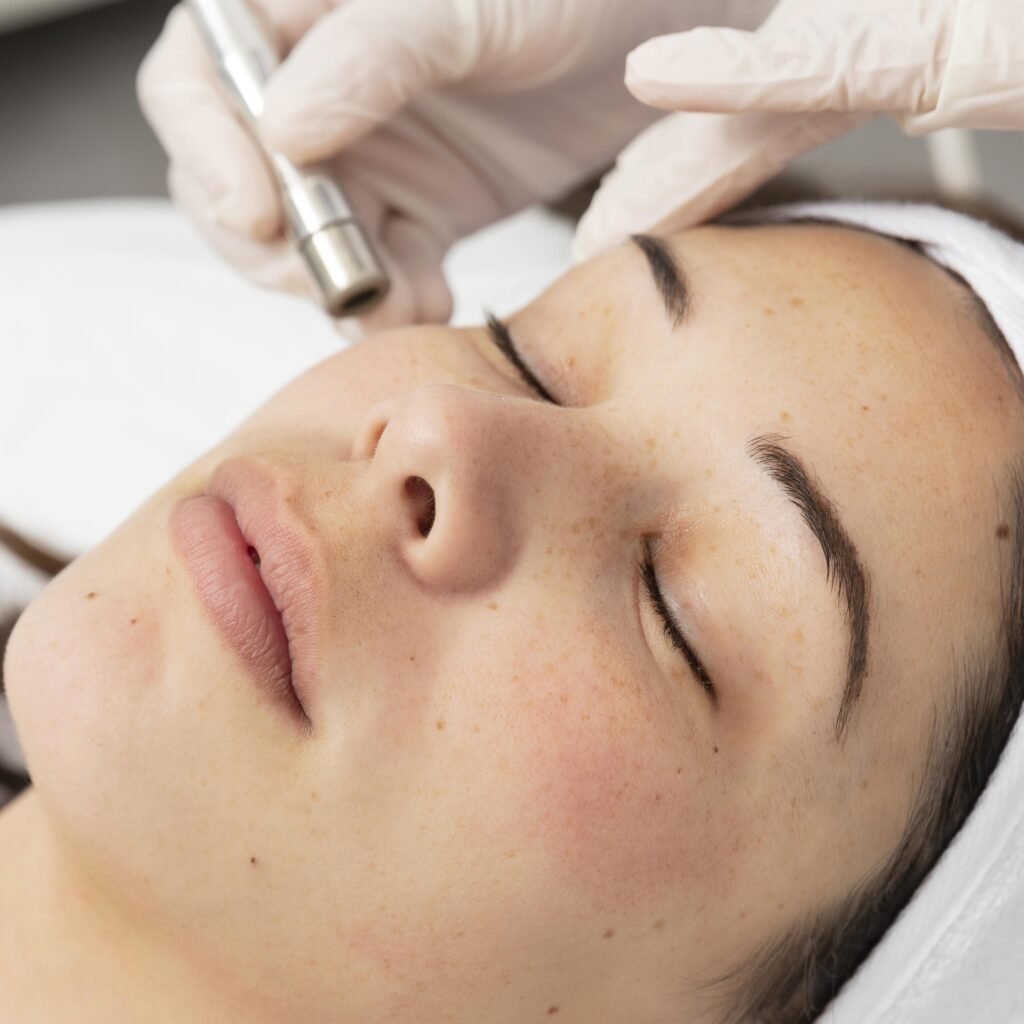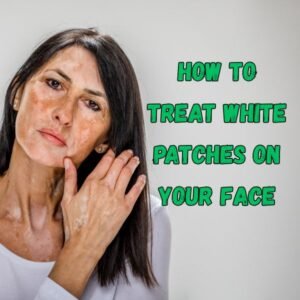Let me tell you a little story about an old-school yet gold-standard skin-resurfacing technique I like to call “The Sandpaper Savior”—also known in dermatology as dermabrasion.
Now, before you envision me attacking someone’s face with sandpaper while evil-laughing under surgical lights—relax. Dermabrasion is much more refined than that.
So What Exactly Is Dermabrasion?
Imagine an ultra-precise sanding tool (think Dremel but dermatologist-approved) gently removing the outer layers of your skin. Sounds a little intense? That’s because it is a bit more aggressive than your average facial. But with the right technique, it works wonders.
We use it mainly for:
- Acne scars
- Surgical or traumatic scars
- Fine wrinkles
- Sun damage
- Uneven skin tone and texture
Basically, if your skin looks like it’s seen a few wars (or just one particularly traumatic teenage acne phase), dermabrasion might just be your comeback story.
Is Dermabrasion Painful?
Ah, the million dollar question.
Let me put it this way: it’s not exactly comfortable like getting a massage, but thanks to local anesthesia (and sometimes sedation), you won’t be feeling the full brunt of the ‘sanding.’ Most patients report a gritty sensation during the procedure—think facial meets road rash but with numbing cream and better outcomes.
The real discomfort kicks in after, when the numbing wears off. It can feel like a strong sunburn or tingling. But most of my patients find it manageable with some cooling compresses.
Road to Recovery
Now, let’s talk recovery. Because if you’re planning to get dermabrasion and then walk into your cousin’s wedding two days later—don’t.
Here’s a realistic timeline:
- Days 1–3: Red, raw, and oozy (it’s normal, I promise).
- Days 4–7: Crusting and peeling, like you’re molting into a newer, smoother you.
- Days 8–14: Baby pink skin emerges—fragile but fabulous.
- Weeks 3–6: Redness gradually fades; you can use makeup by now.
- Months 2–3: Final results shine through like a sunrise after a thunderstorm.
Total downtime? About 1–2 weeks before you can resume social activities. Full healing? About 3 months. But oh, the glow at the end is worth it.
Risks? Yes. Regrets? Rare.
Dermabrasion isn’t without its risks, of course. It’s like dating apps—proceed with caution.
Here’s what we watch out for:
- Redness and swelling (expected)
- Temporary pigmentation changes (especially in darker skin tones)
- Infection (rare but possible)
- Scarring (very rare in experienced hands)
- Breakouts (sometimes, but usually mild and transient)
That’s why we always screen patients carefully. Those with active acne, certain skin conditions, or a tendency to scar easily may not be ideal candidates.
Oh, and sun protection post-procedure? Non-negotiable. If you go sunbathing right after dermabrasion, may the sunscreen gods forgive you because I won’t.
Dermabrasion vs. Microdermabrasion vs. Lasers: The Showdown
Let me settle this once and for all.
- Microdermabrasion is the dermabrasion’s polite younger cousin—great for light exfoliation, gentle glow-ups, and zero downtime. It’s like polishing your car without taking off the paint.
- Laser treatments (like fractional CO2 or Er:YAG) are tech-savvy, precise, and can treat deeper layers with better control. They’re more expensive, often have similar downtime, and are great for pigmentation, wrinkles, and scarring.
- Dermabrasion is manual, powerful, and excellent for textural scars, especially icepick or rolling acne scars. It’s often cheaper than lasers and can deliver dramatic results with a skilled touch.
In short: microdermabrasion is a spa day, lasers are your fancy gadget friends, and dermabrasion is that old-school uncle who doesn’t talk much but gets the job done like a pro.
Final Thoughts
Dermabrasion may not be the trendiest procedure on Instagram Reels, but it remains a workhorse in the world of scar revision and skin resurfacing. It’s not for everyone, and not for every skin type, but in the right hands and with the right expectations, it can be life-changing.
So, if you’re tired of staring at the same acne scars every morning and wondering if your pores could ever be smooth again—maybe, just maybe, it’s time to go old-school.
And remember: no skincare treatment will ever replace daily sunscreen, a gentle cleanser, and not touching your face.
Dermabrasion may smooth out the past—but your future skin is in your hands.
FREQUENTLY ASKED QUESTIONS
Q: Will dermabrasion completely remove my acne scars?
A: Dermabrasion can significantly improve the appearance of acne scars, especially shallow or rolling ones. However, it may not completely erase very deep scars like icepick scars. Multiple sessions or combination treatments may be needed for best results.
Q: Is dermabrasion safe for all skin types?
A: Not always. Dermabrasion is generally safer for lighter skin tones. People with darker skin may have a higher risk of pigmentation changes (lightening or darkening). Always consult a dermatologist to assess suitability based on your skin type.
Q: Can I go to work the next day after dermabrasion?
A: No, you’ll likely need 7–10 days of downtime. Your skin will be red, sensitive, and possibly crusty during the healing period. It’s best to rest, avoid sun exposure, and let your skin recover fully before resuming social or professional activities.
Q: Is dermabrasion better than laser or chemical peels?
A: Each treatment has its strengths. Dermabrasion is great for deep scars and wrinkles, while lasers offer more precision and chemical peels are milder with quicker recovery. The best option depends on your skin concerns, depth of damage, and budget.
Q: How long do the results of dermabrasion last?
A: Results can last for years, especially if you protect your skin from the sun and maintain a good skincare routine. However, natural aging and sun exposure can gradually reduce the effects, so occasional touch-ups may be needed.





